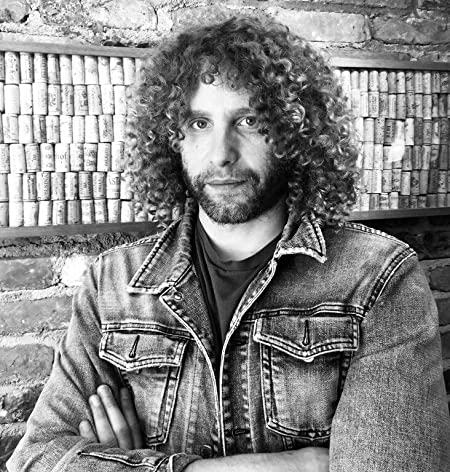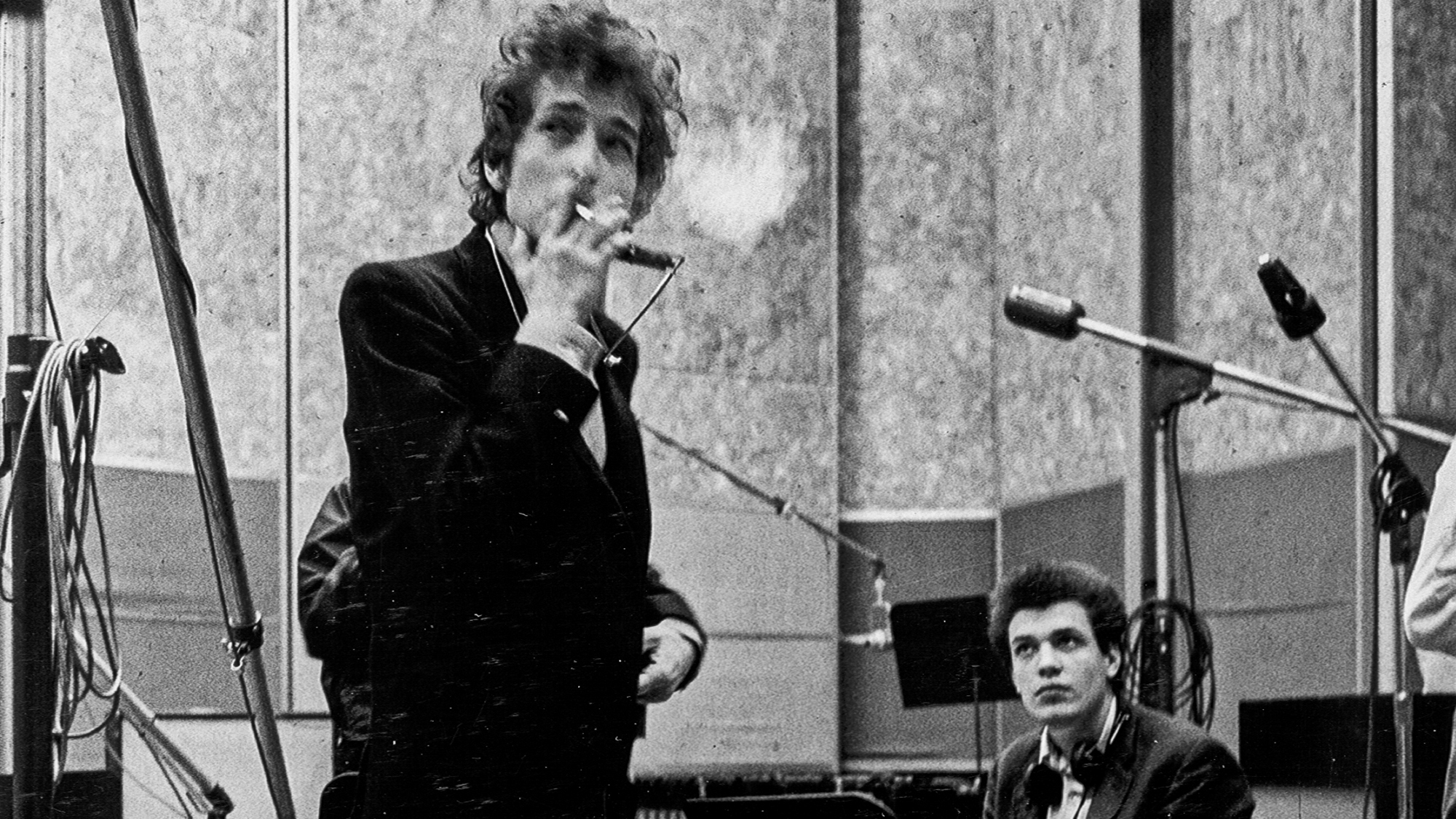Don Felder Flies High Again with Slash, Peter Frampton, Joe Satriani and Richie Sambora
On 'American Rock n Roll,' Don Felder rocks out with an all-star cast of guitar heroes.
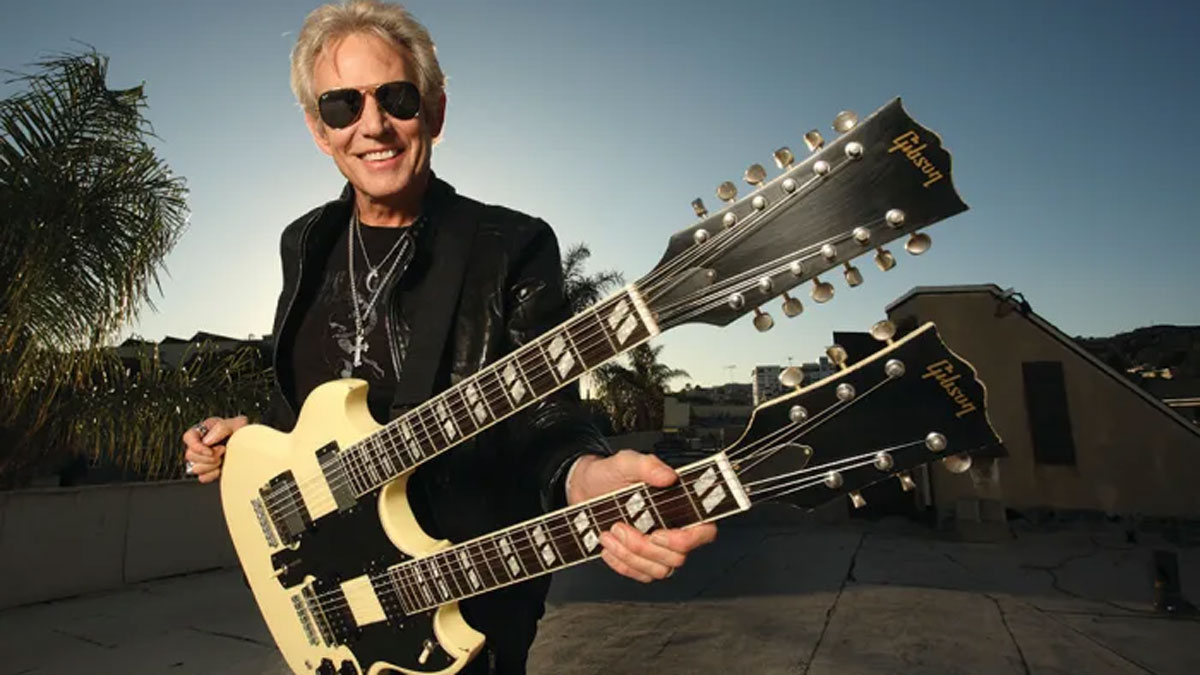
Don Felder named his new album American Rock ’n’ Roll (BMG), and it’s clear from the first words he sings on the record — “Oh, Mr. Hendrix, how high he could fly” — that the singer, songwriter and guitarist remains, first and foremost, a proud fan of the titular music.
“The song is like a musical documentary,” Felder says of the title track. Indeed, in addition to Hendrix, the tune name-checks everyone from the Allman Brothers, Aerosmith, Bruce Springsteen and Bob Seger to Van Halen, Guns N’ Roses, the Red Hot Chili Peppers and Green Day. “It’s me remembering all the things that have gotten me excited about this music, from seeing Elvis Presley on television to hearing B.B. King on the radio to being at Woodstock and watching Hendrix and Santana and Janis Joplin and my friends Crosby, Stills, Nash & Young.
“That was probably the biggest nuclear explosion that has ever happened in the history of rock and roll,” he continues. “And witnessing that kind of excitement and impact and phenomenon has been one of the key things that’s propelled me to do this over and over again. It’s why I’m still doing it.”
To be sure, across almost 50 years, Felder has contributed more than his fair share of legendary moments to the American rock and roll canon. First and foremost, there is his work with the Eagles. In addition to cowriting one of the most famous songs in the genre’s history, “Hotel California,” he also played that tune’s iconic licks and solos, the latter in harmony with Joe Walsh, and helped write, record and perform on classic Eagles albums like One of These Nights and The Long Run.
Following the group’s dissolution in 1980, Felder guested on albums by the Bee Gees, Stevie Nicks and others, and experienced some success as a solo artist, in particular “Heavy Metal (Takin’ a Ride),” the riffy theme song to the 1981 animated sci-fi flick Heavy Metal. (The tune experienced a resurgence a few years back when it made a surprise appearance in a quite awesome South Park episode that spoofed the movie.) He also took part in the massively successful Eagles reunion in the 1990s but exited in 2001 under acrimonious circumstances. It wasn’t until 2012 that Felder reappeared on the music scene in earnest, when he released Road to Forever, his first solo album in almost 30 years.
Now he’s back with American Rock ’n’ Roll, which, in addition to showcasing Felder’s strong songwriting and vocals and inimitable lead chops, also finds him joined by a slew of A-list guitarists, including Slash (on the title track), Peter Frampton (“The Way Things Have to Be”), Richie Sambora (“Limelight”), Joe Satriani (“Rock You”) and Alex Lifeson (“Charmed”). There are also vocal contributions from Sammy Hagar and Bob Weir and drums from Mick Fleetwood and Chad Smith, among other guest spots. The result is an album that’s as big a blast to listen to as it was to make. Indeed, Felder says, “Every time I’d go into the studio, I’d walk away feeling fantastic.”
In the following interview with Guitar Player, Felder talks about his life in music, from his legendary work with the Eagles and the cult-classic status of “Heavy Metal (Takin’ a Ride)” to what led him to step back from the industry and, a few years ago, return to it with renewed vigor. Of course, he also gave us all the details behind the making of American Rock ’n’ Roll, including how he recruited the various guest artists and the gear that was used in its creation. “Music has always brought me so much love and joy my entire life,” Felder says. “That’s the reason I first started doing it all those years ago, and it’s the reason I still do it today.”
All the latest guitar news, interviews, lessons, reviews, deals and more, direct to your inbox!
You’re joined by a lot of great guests on American Rock ’n’ Roll. What led you to go in that direction with the album?
On my last record, Road to Forever, for some reason I felt compelled to play all the guitars, mandolins, pedal steels — everything with strings on it. I invited Steve Lukather to play on one song, but other than that, everything on the album I did myself. Now, that record is clinically perfect, but it lacks the fire and enthusiasm and the feeling of sitting toe-to-toe with someone — whether it’s me and Slash, or me and Satriani, or me and Peter Frampton — and coming up with stuff on the spot. And I love that spontaneity, and the energy in the moment of creativity, where things just gush out of you. I missed that on my last record. So this one started with me bringing in a couple of guests, and it turned out to be so much fun that I started looking at nearly every track and asking myself, Who can I get here?
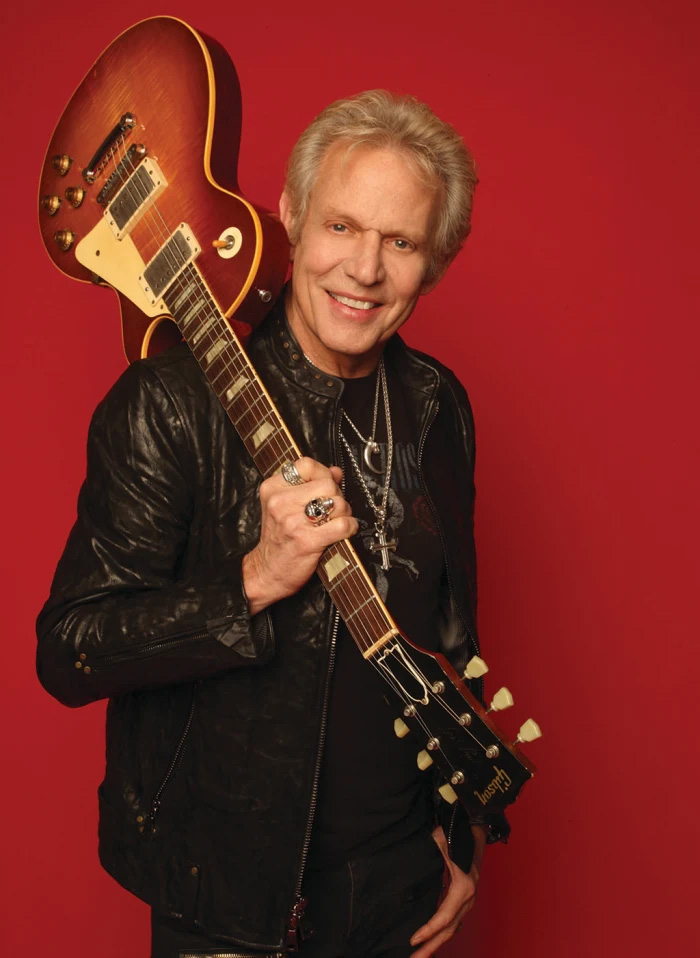
How did you get some of these artists involved?
Well, Peter Frampton, we did a bunch of dates together a few years on the Frampton’s Guitar Circus tour. And onstage, he would play a Les Paul through a Leslie, and it just had this heavenly, angelic quality to it. And for one of my new songs, “The Way Things Have to Be,” I just thought that would be the perfect tone. So I hopped on a plane with a little hard drive under my arm and flew to see Peter in Nashville. We went into his studio, and literally two hours later, we had this beautiful track. And then I was out the door.
Were most of these guest spots done live in the studio with you playing along?
Mostly, yeah. For instance, Slash lives not too far from where I do, and when I started writing the title track, I had the lyrics that run through the decades and cite all the people that have been so influential in American rock and roll. And when I got to the lyric, “Guns, Slash and Rose,” I thought, God, he would be perfect to play on this track! So I reached out to him, and he came over to my studio. We plugged him into one of my Marshalls, and I used a little [Fender] tweed Deluxe, and then we sat there together and just played. We made, I think, two or three passes through the song and did a little editing between our solos. And it turned out really great.
Then for “Rock You,” I called up Sammy [Hagar], who I’ve known since the ’80s, and I said, “You know, I’ve got this great idea for a song. I’d love for you to do a duet with me, and we can trade off verses.” And he said, “Yeah, come on up.” So I flew up to San Francisco to Sammy’s studio, we set up a mic, and literally 45 minutes later, I had sung my parts, he had sung his parts, and that was it. And Joe Satriani, he’s up there too, and he keeps his guitars in the back of Sammy’s studio. So we plugged in and sat in the control room and made up some harmony stuff, and he played a solo as well. And the funny thing is, Bob Weir has a studio about two blocks away, and when there’s nothing going on in his studio he meanders over to Sammy’s and hangs out. So while we’re recording this song, he comes walking in. And I go, “Bob, you’ve got to sing, ‘Rock you’ on this chorus!” We had him sing it about five times, and that was it.
That’s pretty serendipitous.
Yeah. A lot of it sort of came together through whatever forces were there, without my having to do anything.
Another great tune is “Limelight,” which has Richie Sambora on it.
I originally wanted to try to get Joe Walsh to play on that song, but it became very complicated and — um — politically incorrect, I guess would be the best way to say it. [laughs] So I reached out to Richie, who I’ve known a long time, and he said, “Yeah, sure, come on over.” So I went over to Richie’s house at about 11 o’clock one morning, again with my hard drive tucked under my arm. And Richie has this studio setup in the breakfast nook of his kitchen, so we were standing in his kitchen doing the song! And he said, “I want to have a different sound.” So he got this pedal called a POG [the Electro-Harmonix Polyphonic Octave Generator] that he used on his part. It sounds kind of like a talk box in octaves. I thought it was perfect. I didn’t even know what a POG was at the time, to tell you the truth.
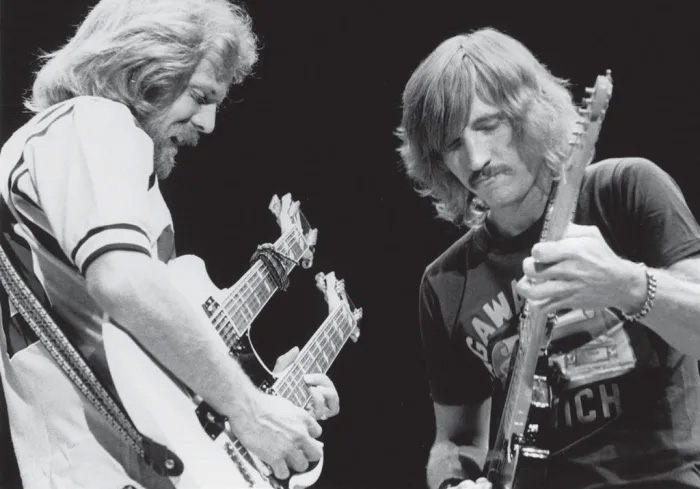
What gear did you use on the record?
I have seven Les Pauls that I keep in my studio, and I have them set up in different tunings. Some are in standard, some of them are a half-step down, some of them are set up for slide. Some have Gibson pickups, some have Seymour Duncans, which are nice and hot. So I always use some Les Paul, but I tried to not use them all the time on this record.
One guitar I had was a custom model. James Young from Styx was kind enough to put me in touch with his guitar builder, and he built me a Strat-style guitar with custom pickups and a Sustainiac. If you listen to “Sun,” there are two guitars that sound like pedal steels, but it’s actually me playing slide in harmony on that Strat with the Sustainiac, because you can hit a note and it will just sit there forever with the slide on it. And then I used an old orange Gretsch Tennessean that I bought in the early ’70s. It sounded fantastic, but I hated the orange color, so I had it refinished in black with gold hardware. I think I used it on maybe a half a dozen Eagles records and played it live on things like “Desperado.”
And then for acoustic, I used a ’64 Martin D-35 that is just a magnificent-sounding guitar. As a matter of fact, it was on every Eagles album from when I joined the band until I left. I also used a Gibson J-200 on some stuff, there’s a couple of Taylors, an old Fender Duo-Sonic, a Tele — just a lot of different things.
How about amps?
God, I honestly don’t know how many old amps I have. It goes all the way back to old National and Fender stuff. On this record I used a ’64 Marshall 50-watt, a couple of Dumble amps, an old blackface Fender ’65 Deluxe Reverb, some old Vox AC30s. In general, I like smaller amps. You can mic a small combo like a Fender tweed Deluxe or Champ and it sounds bigger than if you put 100 watts through four 4x12s. Like on “Hearts on Fire,” I used this one little tweed Champ that I also used on the Eagles’ “Victim of Love.” It’s a big-sounding song, but the setup is just a Tele through that little Champ.
Did you use your iconic white Gibson EDS-1275 double-neck at all?
Not on the record. But the original double-neck has been in the Rock and Roll Hall of Fame since, I think, 1998, on display in the Eagles exhibit. And that guitar is also at the exhibit the Hall of Fame and the Metropolitan Museum of Art are putting on in New York about the most influential guitars in rock. I was unbelievably flattered that they would ask me to be a part of that. But the double-neck I have now, that’s a copy — it’s one of 50. I think it was back in about 2003 when the Gibson Custom Shop called me up and said, “We want to do a Don Felder ‘Hotel California’ guitar.” And I went, “Well, which one?” [laughs] Because I played a ’59 ’burst on the recording, but then when I got onstage with the Eagles I had to figure out how I was going to play the 12-string introductory part and the harmonies and all the other stuff that I had to do. And the only way I could figure it out was to use the double-neck. And I’ve been lugging that bear around ever since. I think my back issues have a lot to do with that Gibson 1275!
But so I said to Gibson, “Do you want to do the Les Paul or do you want to do the double-neck?” And they said, “Let’s do both!” So they made 150 double-necks and 300 Les Pauls. They were identical. And the one I brought down to the photo shoot [for this issue of Guitar Player] was what they call an “artist proof.” They made these things, sent them to me, and I had to play them and give them the thumbs up. I received five artist proofs, and that was one of them.
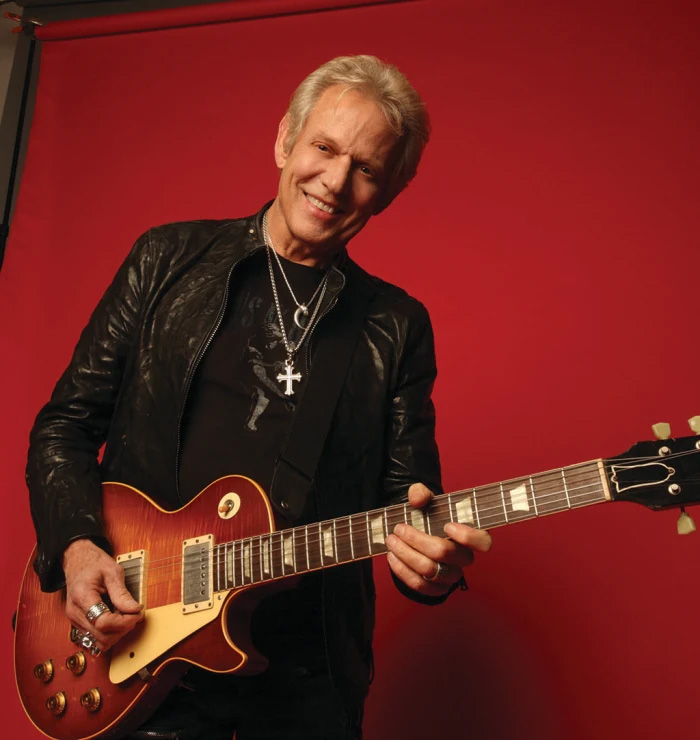
Speaking of the Eagles, I have to ask, what was the issue with getting Joe Walsh to play on your song “Limelight”?
I wouldn’t say there were “issues.” It’s just… It’s hard for Joe to step outside of his commitment with the Eagles and come and record with me. I have no problems with Joe. I’ll love him until my last breath. I respect him and love to play with him. And, hopefully, somewhere in the future we’ll be able to do that.
Even as you’re creating all this new music, you still, of course, play the older Eagles material onstage. You embrace your past.
Absolutely. I think it’s an amazing phenomenon that, for whatever reason in the cosmic plan, those people got together in that band and were able to write and sing and play guitars and drums and all these instruments in a kind of magical, unbelievably great way. It’s an honor to have been a part of something like that. I mean, to have two of the biggest-selling albums of all time [Their Greatest Hits] and Hotel California]! You don’t start out at 10 years old with a broken-up Sears & Roebuck guitar thinking that anything like that could even happen, much less that it would happen to you. So I’m very proud to go onstage and play some of the songs that I wrote, co-wrote and played with those guys for 27 years. It’s a wonderful honor, and I never think ill of it. I have the highest regard and respect for that music.
Post-Eagles, you put out a few solo recordings but then took a long break from music. Why?
Well, what happened is I had four young children, and I had been on the road on and off, but mostly on, for close to 10 years. They have grown up without a father. When the Eagles hit the hold button, you’re right, I did a couple of songs, like “All of You” and “Heavy Metal (Takin’ a Ride)” [both for the film Heavy Metal] and some other stuff, like my solo album [1983’s Airborne]. And I was asked then to go out on the road, but I declined. I said, “I don’t need to be on the road. I need to be at home raising these kids.”
So I made a conscious effort to not leave, to not go on the road and to not try to build a solo career. I made a decision to be there as a dad — to get up in the morning, make breakfast for the kids, pack them up for school and drive them to school. I was commissioner of the Malibu Little League and soccer teams. And I loved every day and every year of it. I have no regrets about having done that.
And so, finally, my kids grew up and they all left home. And around 2011, I wound up getting a divorce. At that point, I really wanted to start doing stuff again. And now that’s blossomed into me having 399 days a year where I’m working! [laughs]
You mentioned “Heavy Metal (Takin’ a Ride).” That’s become something of a cult classic over the years.
You know, it’s funny — when the Eagles were doing the Hell Freezes Over tour, there would be at least one, if not multiple people, that throughout the course of every show would yell out, “Heavy metal!”
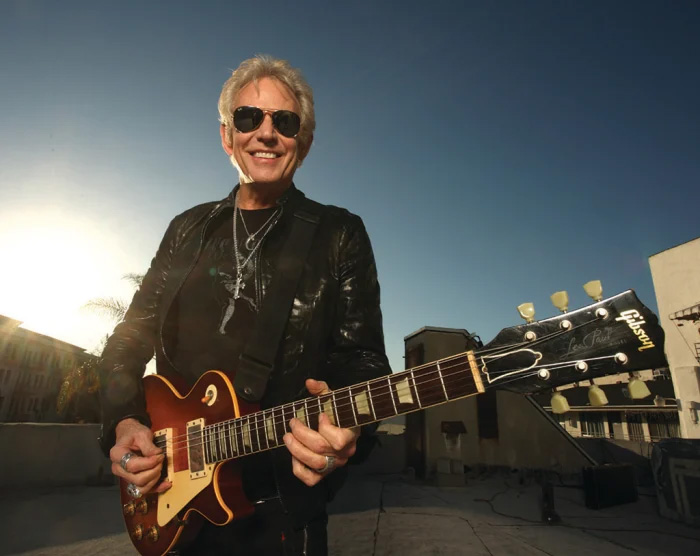
Which is not a phrase you usually hear at an Eagles show.
There was no way that Don Henley and Glenn Frey were gonna let me do “Heavy Metal.” It was not gonna happen. [laughs] But you know, I originally wrote that song for [1979’s] The Long Run, for Joe [Walsh] and me to play together. All those chromatic run-ups and run-downs and solo trade-offs — that all would have been me and Joe.
No kidding?
Yeah. But it never got finished. The lyrics never got completed. In fact, it used to be called, “You’re Really High, Aren’t You?” That was the working title. And you know, it was also kind of the state of mind during The Long Run. [laughs] So there you go.
Slash Talks “American Rock ’n’ Roll”
How did you get involved on the song “American Rock ’n’ Roll”?
A mutual friend who works with Don emailed me and asked if I was interested in doing the song. I’m a big Don Felder fan, and I was honored to get that email, so I just responded, “Yes! I would love to!”
How did you develop your solo? Was it off the cuff, or did Don tell you what he was looking for?
No, it was totally off the cuff. I just came in, they told me where the section was for my solo, and we went from there. Don came in, and he was great — he just let me do my thing on the track. They also explained to me how they were going to edit Don’s solo into it, intercutting mine with his, so that we both had very fluid solos. And it worked out pretty well.
How far back does your relationship with Don go?
He and I have never met until now, so our relationship doesn’t go back, other than the fact that I have listened to him for as long as I can remember.
What do you like about Don as a player and a songwriter?
As a player, he’s got a very recognizable sound, feel and tone. And he’s got a great note selection. Most importantly, he’s got his own personality on the guitar, and it’s easy to recognize. It’s a good one — something that appeals to me. As a songwriter, well, obviously, he’s one of the great ones, whether it’s his stuff with the Eagles or solo.
Joe Satriani Talks "Rock You"
How did you get involved on Don’s song “Rock You”?
Robin DiMaggio [producer and drummer who has worked with both Felder and Satriani] asked if I would be interested in playing on Don’s album, and I jumped at the chance. Sammy Hagar’s studio turned out to be the most convenient place to meet up, and before you know, it Sammy, Bob Weir and I were all together on the same track!
You play a pretty ripping solo on the song. How did you develop it? Was it spontaneous, or did Don give you any direction for it?
He asked me to go crazy for the middle solo, which I recorded at my home studio prior to meeting up. Then once we were together at Sammy’s, Don wrote, on the spot, a series of riffs and motifs for us to play together, alternately harmonizing and trading licks.
That’s the kind of thing he and Joe Walsh would do. How did the two of you work those out?
When you’re playing guitar with Don Felder, you listen and follow. After all, he is Don Felder!
To that end, what do you love about Don as a player and a songwriter?
As a player and a composer Don has a unique, American style and sound. His playing is always evocative, strong and solid. His inventions turn into instant classic riffs.
Peter Frampton Talks "The Way Things Have to Be”
How did you get involved on Don’s new album?
He had the song “The Way Things Have to Be,” and he’d already had some idea of what he wanted me to play and what he wanted me to sing. So I did a little bit of both. It was a lot of fun. He came to my studio in Nashville, and we did it there. He already had the track, and I just overdubbed my parts. It was great.
How far back does your relationship with Don go?
We met around the time of the Peter Frampton’s Guitar Circus tour, in 2013 or 2014. I asked if he would be interested in joining, and he said yes.
What made you want to bring him into the Circus?
Well, he’s obviously written some legendary songs as part of the Eagles — one of them, in fact, being their biggest song ever. [laughs] So when we were thinking of people to become part of the tour, he was one of the first people we asked.
Back in the day, were you a big fan of Don’s?
Absolutely! Every Eagles album is perfection. People think they’ve released a lot more than they actually have, but the Eagles were always a band that didn’t go near the studio until they had 10 or 12 killer songs. And even then, they take their time. I always thought it was an excessive approach until I realized that every one of their albums was a smash!
Richie Sambora Talks "Limelight"
Don told us that you recorded your parts for “Limelight” in your kitchen.
I did! I have a studio in there. It’s great. You walk downstairs in the morning and you sit down, and you’re right there. It’s homespun, but everything works. Bob Rock put it together for me, and there’s a bunch of great gear. I always have guests come over, and Don is one of my honored guests. He played on some stuff for me, and I did some stuff for him.
How did you and Don first meet?
The first time was at a ceremony many, many years ago. I’d been working with Norm from Norman’s Rare Guitars, doing some stuff for the [social services organization] Midnight Mission, and I got an award. Don played at the event and I played with him, and I think that’s when we started getting going. After that, I got a call from him: “Hey, you wanna come to China with me?” I go, “I’ve got a little work to do, Don. I can’t really go right now!” [laughs] But we stayed friends. It’s a nice thing when your heroes become your friends. It’s wild.
What is it about Don that makes him one of your heroes?
Don is an amazing, proficient, unbelievable hook-meister and songwriter. I grew up on his licks. When I was in cover bands all I did was play Eagles songs. And the first time I saw the Eagles it was at Giants Stadium [in New Jersey]. They were headlining, and Heart opened up. Don came out and shredded it. I was about 15.
Don was a part of me being schooled as a guitar player, because he made sure every note was memorable. That’s probably the greatest thing I could say about the guy, besides him being a nice dude. Everything was solid. It was beautiful, and you remembered it. The guitar sound, the guitar playing—he had it all down.
Rich is the co-author of the best-selling Nöthin' But a Good Time: The Uncensored History of the '80s Hard Rock Explosion. He is also a recording and performing musician, and a former editor of Guitar World magazine and executive editor of Guitar Aficionado magazine. He has authored several additional books, among them Kurt Cobain: Montage of Heck, the companion to the documentary of the same name.





